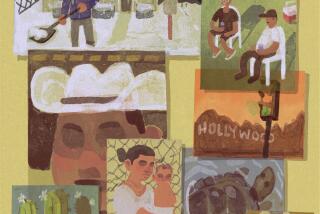Green shake
- Share via
My first exposure to Chicago-style corruption came when I was 14. My parents wanted me to get a summer job, but the legal working age in Illinois was 16. No problem.
My father knew people. Not big people. These were the kind of guys who knew the big people’s barbers. My father saw our problem as having three steps: First, we needed a guy who could supply authoritative evidence that I was 16. Second, we needed a guy with an “in” to jobs a “16-year-old” could perform. Finally, we needed a guy who’d hire me.
The first guy worked in a state office building somewhere near City Hall. After my father explained the situation, the guy came around the counter, looked at me and went into a back room. About 10 minutes later, he emerged with a birth certificate. My official birth date was now 1943 rather than 1945. He gave the proof to my dad, who then shook the guy’s hand for a long time, long enough for it to turn “green.”
That was my introduction to the famed “green handshake,” which has facilitated so many Chicago transactions.
The second guy was an official in the ballpark vendors union. From the moment we entered his office, it was clear he was a man of substance. The velvet paintings on the wall said it all.
We got down to business. My father gave him a green handshake, and he told me to report to Frenchie, the union steward at Wrigley Field.
I arrived at Frenchie’s office the next morning and found 11 men seated on the concrete floor near the door. Roughly half were drinking out of paper bags. I seated myself next to a fellow who was thumbing through what was then called a “racy” magazine. Occasionally he’d lean down the line, holding out the magazine and asking someone whether he’d ever seen anything like that.
Two hours later, a little guy with a white mustache walked up to the door and unlocked it. Once inside, he placed a stack of cards on a desk and sat down. Frenchie was open for business.
Each of the 11 men in front of me marched up to Frenchie and shook his hand. After each handshake, Frenchie would lower his hand below the surface of the desk, glance downward and slide something into his pocket. Then he’d take a card from the stack, punch out a chad and hand it back to the guy.
By the time I reached the door, I knew what was expected. I put two tightly folded dollars in the palm of my hand and shook Frenchie’s hand. He put his hand below the desk, looked at my offering, looked back at me, then punched out a chad, handed me the card and said, “You’re selling little Coke.”
Vendors received no salary. Their sole remuneration was 20% of sales. Being smart for my age, I realized that this meant that selling a higher-priced item was better than selling a cheaper one. “Little Coke,” which sold for 15 cents, lay at the bottom of the vending heap. For every cup I sold, I’d make 3 cents. To make $30, I’d have to sell 1,000 cups. The Cubs were drawing about 11,000 fans a day then, and there were 20 or so other guys selling little Coke. For a day’s work I was going to make roughly the price of a Baby Ruth.
I wondered why Frenchie had given me such a crummy item. Then I overheard another vendor mention that he’d given Frenchie the customary $5, and I realized I had more to learn about green handshakes.
I gleaned much more practical information that summer. I learned that, despite astronomical odds, a pop foul can land in the middle of a tray holding 20 cups of Coke. I learned you never, ever bought a hot dog at a ballpark unless you believed that steam could kill the most virulent bacteria. And I learned that the moral, ethical and legal creativity that made Chicago great was not confined to its greatest citizens.
The soft-drink trays that vendors carried were made of open mesh steel. The caps on the Coke cups carried in these trays leaked like sieves. As a result, by the sixth inning the vendors selling Coke had long dark stains on their pants, running roughly from their belts to their ankles. This did not encourage sales.
During one of my summers, someone in the front office devised a plan for dealing with the unsightly manifestation of the spillage problem (to be distinguished from the spillage problem itself). The cups would be placed in a plastic tub. When the Coke spilled, it would be caught in the tub and discarded.
The Beta test went perfectly. Coke spilled into the tub, the tub was emptied, vendors’ trousers stayed dry, and customers bought Cokes after the sixth inning.
We vendors who were given the trays quickly realized another advantage of the new arrangement. It was a simple matter to retrieve used Coke cups from waste bins, fill them with the tub spillage, and crown them with discarded plastic lids. This recycled product could then be sold for a commission of 100%. To maximize this incidental income, my colleagues and I took to bouncing down the stadium aisles, leading management to believe theirs was an exceptionally happy ship.
And it was.
More to Read
Sign up for The Wild
We’ll help you find the best places to hike, bike and run, as well as the perfect silent spots for meditation and yoga.
You may occasionally receive promotional content from the Los Angeles Times.






